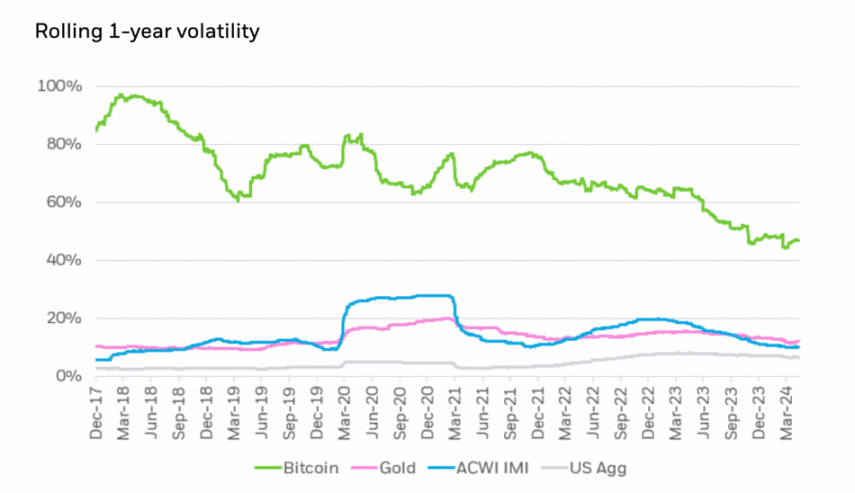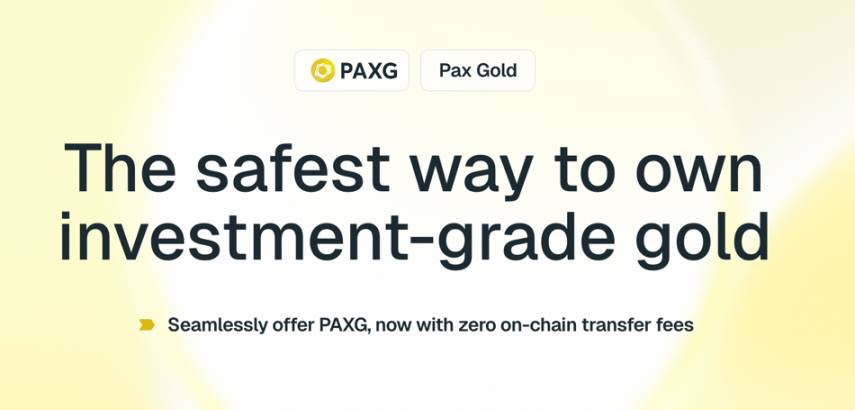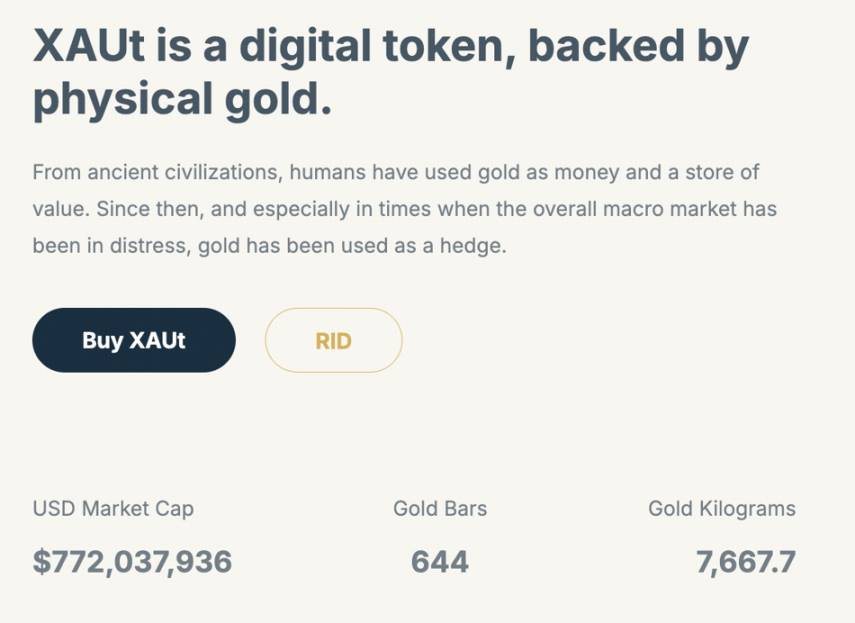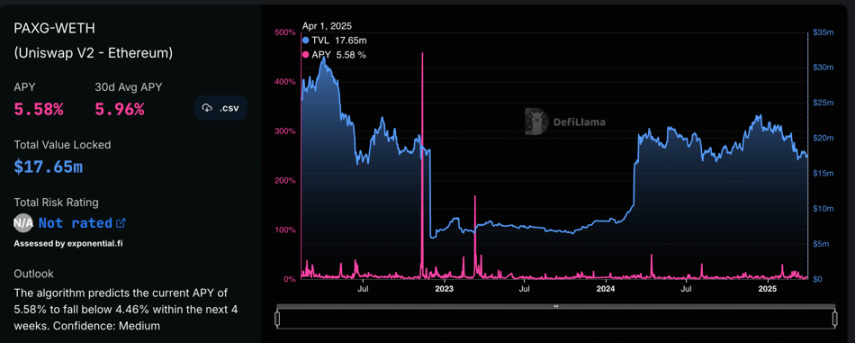Investors can gain exposure to gold in the form of cryptocurrency, and new opportunities have emerged to earn yields on tokenized gold assets.
Written by: 0xEdwardyw
Why Gold Remains Important
In 2025, gold once again made headlines, reaching an all-time high driven by a surge in safe-haven demand. The price of gold broke through $3,000 per ounce for the first time, marking a strong comeback for the "king of precious metals." Concerns over fiat currency devaluation and global instability have reignited investor interest in gold.
Bitcoin is often referred to as "digital gold," leading many to question the relevance of physical gold. However, the latest data speaks for itself: gold remains crucial for asset diversification and stability. As of March 2025, gold's annual return reached 36%, outperforming major stock indices and Bitcoin.
Lower Volatility than Bitcoin
Compared to Bitcoin's extreme price fluctuations, gold's price movements are much more moderate. For instance, as of 2024, Bitcoin's annual volatility was around 47%, while gold's was only 12%. This means Bitcoin's price volatility can be nearly four times that of gold. This difference is critical for investors focused on risk control.
We witnessed this at the beginning of 2025: while tech stocks (Nasdaq index) fell nearly 15% in a matter of weeks, gold remained flat (up about 1%), while Bitcoin dropped about 20%, moving almost in sync with the stock market. Gold's low volatility makes it a valuable asset for capital preservation during market turmoil, while Bitcoin resembles a high-beta risk asset.

Source: https://www.ishares.com/us/insights/bitcoin-volatility-trends#:~:text=,deviation%20of%20annualized%20daily%20returns
Low Correlation with Bitcoin
In recent market cycles, gold and Bitcoin have shown diverging trends. Over the past year, gold has steadily risen, driven by inflation concerns and geopolitical tensions, reaching new highs; meanwhile, Bitcoin has fluctuated within a wide range, more influenced by investor risk appetite. Notably, gold has a low, even negative, correlation with traditional assets, making it ideal for diversification in asset allocation. In fact, gold and Bitcoin also exhibit a negative correlation, meaning holding both can further enhance portfolio diversification.
Tokenized Gold in 2025
One of the most exciting developments is that gold itself has joined the blockchain revolution. The so-called "tokenized gold," which consists of digital tokens fully backed by physical gold, is experiencing rapid growth. As of March 2025, the market capitalization of gold-backed crypto tokens reached a historic high of $1.4 billion. This sector is primarily dominated by two tokens: PAX Gold (PAXG) and Tether Gold (XAUt). These tokens allow investors to hold gold in digital form, combining the stability of gold with the flexibility of crypto assets.

Source: https://www.coindesk.com/markets/2025/03/27/tokenized-gold-hits-new-record-market-cap-as-trading-volumes-soar-in-march
PAXG (Paxos Gold)
PAX Gold (PAXG) is issued by the regulated financial institution Paxos Trust Company, based in New York. Each PAXG token represents one ounce of refined gold stored in a vault certified by the London Bullion Market Association (LBMA). Importantly, Paxos operates under strict regulation—the token is fully backed by physical gold on a 1:1 basis and undergoes monthly audits by third parties to verify its reserves. Paxos is authorized by the New York State Department of Financial Services (NYDFS), ensuring strong compliance and providing holders with ample confidence.

In 2025, PAXG's popularity has steadily increased. Its market capitalization is currently around $680 million, accounting for about half of the tokenized gold market. PAXG's daily trading volume often reaches tens of millions of dollars. It benefits from regulatory trust, and even after increased scrutiny of stablecoins in the U.S., Paxos Gold continues to operate steadily.
New trading products for PAXG are also emerging: for example, at the end of 2024, the derivatives exchange Deribit launched futures and options contracts for PAXG, marking a growing interest from institutional investors in tokenized gold as a trading asset.
XAUt (Tether Gold)
Tether Gold (XAUt) is another major gold-backed token, issued by TG Commodities, a company associated with Tether. Each XAUt represents one ounce of gold stored in Swiss vaults that meet London Good Delivery standards. As of 2025, XAUt's market capitalization is approximately $770 million.
However, XAUt's regulatory framework differs from that of PAXG. In 2023, Tether moved its gold token business under the regulation of El Salvador, and TG Commodities obtained a stablecoin issuance license in the country, thus operating within that regulatory framework. Tether Gold regularly publishes reports on its gold reserves and claims that its tokens are fully backed by physical gold, but unlike Paxos, it has not yet undergone a complete independent audit of its reserves. This has raised some market concerns about its transparency.

Tether's management has stated that conducting a comprehensive audit by one of the Big Four accounting firms has become a top priority, considering the new regulatory rules in the stablecoin space. The market generally hopes that XAUt's gold reserves will achieve the same level of audit standards and transparency as PAXG in the near future.
Yield Opportunities in DeFi
In addition to simple buy-and-hold strategies, tokenized gold has opened up entirely new use cases in decentralized finance (DeFi). Crypto investors can deploy gold-backed tokens into various yield-generating strategies, allowing gold to become an asset that generates passive income. Historically, gold typically just sat quietly in vaults, generating little to no yield; however, now, through DeFi protocols, gold can create returns without moving the physical gold.
Liquidity Pools and Automated Market Makers (AMMs)
For example, the PAXG/USDC pool on Uniswap allows users to trade between tokenized gold and U.S. dollars. Liquidity providers (LPs) in this pool can profit by earning trading fees.
This mechanism allows LPs to earn passive income while maintaining exposure to gold, especially during periods of high demand and active trading in gold, making it particularly attractive.

Source: https://defillama.com/yields/pool/459e731e-60a0-45fa-8b49-092468ab14f5
Another option is the PAXG/WETH liquidity pool, which supports exchanges between gold and Ethereum. This pool typically has higher liquidity but also carries a greater risk of "impermanent loss," as PAXG (which tracks gold prices) is relatively stable, while WETH (which tracks ETH) is highly volatile. When ETH prices fluctuate dramatically, the relative value of the two assets can quickly diverge, leading to significant impermanent loss risk.
Both pools offer yield opportunities, but their risk-return characteristics vary due to the volatility of the paired assets.

Source: https://defillama.com/yields/pool/40ac1aaf-26f1-4a04-b908-539f37672ef2
Impermanent Loss
Impermanent loss (IL) is a core concept in DeFi, especially critical for users providing liquidity in automated market makers (AMMs) like Uniswap. When the prices of the two tokens in a liquidity pool change compared to holding them separately, the value of the assets held by LPs may decline, and this loss is referred to as "impermanent loss." It is termed "impermanent" because if the prices return to their original ratio, the loss may decrease or disappear; however, if liquidity is withdrawn while prices are still diverged, this loss becomes a "permanent loss."
The magnitude of IL primarily depends on two factors: the volatility and correlation of the paired assets.
In the PAXG/USDC pool, one side is the stablecoin PAX Gold (PAXG), which is pegged to the price of gold, and the other side is the stablecoin USDC, which is pegged to the U.S. dollar. Since the price volatility of gold is much lower than that of crypto assets, and USDC consistently maintains a value of $1, the price ratio between these two assets remains relatively stable, significantly reducing the risk of impermanent loss.
In contrast, the PAXG/WETH pool pairs PAXG with WETH. PAXG has low volatility, while the ETH market is highly volatile, sometimes rising or falling by 20-50% in a short period. This extreme volatility triggers the AMM's "constant product" algorithm, causing the assets in the pool to rebalance, reducing the proportion of well-performing assets (like PAXG when it rises) and increasing the proportion of poorly performing assets (like ETH). Ultimately, the high-value assets remaining for LPs will be far less than if they had simply held them, resulting in a larger scale of impermanent loss.
Yield Samurai's Impermanent Loss Estimation Charts


Source: Samurai
免责声明:本文章仅代表作者个人观点,不代表本平台的立场和观点。本文章仅供信息分享,不构成对任何人的任何投资建议。用户与作者之间的任何争议,与本平台无关。如网页中刊载的文章或图片涉及侵权,请提供相关的权利证明和身份证明发送邮件到support@aicoin.com,本平台相关工作人员将会进行核查。




